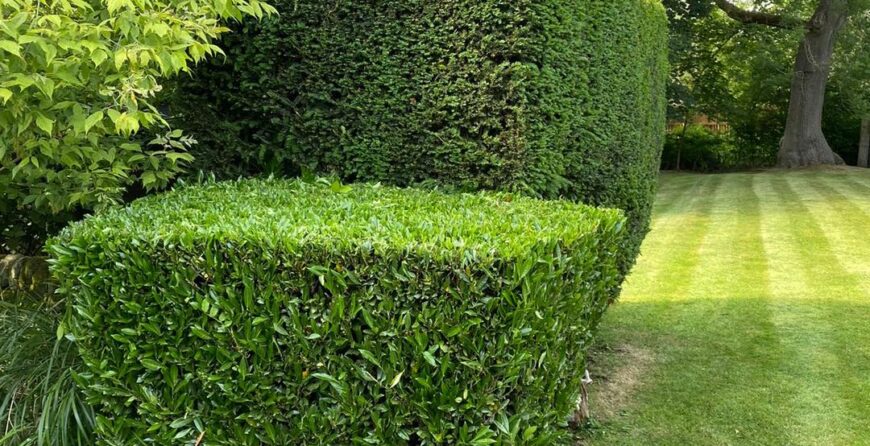How to Achieve a Weed-Free Lawn: Best Practices and Products
Having a lush, green lawn is a dream for many homeowners. However, pesky weeds can quickly turn that dream into a nightmare. Weeds not only ruin the aesthetic appeal of your lawn but also compete with your grass for nutrients, water, and sunlight. To achieve a weed-free lawn, it is essential to follow best practices and use effective products. In this article, we will explore some tried and tested methods to help you achieve a weed-free lawn that will be the envy of your neighborhood.
1. Start with Proper Lawn Care Practices
The foundation of a weed-free lawn lies in proper lawn care practices. Here are some essential steps to follow:
a. Mowing: Regular mowing is crucial to maintain a healthy lawn. Set your mower blade at the appropriate height for your grass type and avoid cutting more than one-third of the grass blade at a time. Taller grass shades out weeds and promotes a healthier root system.
b. Watering: Water your lawn deeply and infrequently. This encourages deep root growth and makes your grass more resilient to weed invasion. Avoid frequent shallow watering, as it promotes shallow root growth and weakens your grass.
c. Fertilizing: Apply a balanced fertilizer according to your grass type and the recommended schedule. A well-fed lawn is better equipped to compete with weeds.
d. Aerating: Regularly aerate your lawn to alleviate soil compaction and improve water and nutrient absorption. This helps your grass grow stronger and reduces weed growth.
2. Identify and Understand Common Lawn Weeds
To effectively combat weeds, it is crucial to identify and understand the common types that invade lawns. Some common lawn weeds include dandelions, crabgrass, clover, chickweed, and broadleaf plantain. Each weed has its own growth habits and requires specific treatment methods. By familiarizing yourself with these weeds, you can tailor your weed control strategies accordingly.
3. Manual Weed Removal
For small infestations or isolated weeds, manual removal can be an effective method. Use a hand tool, such as a dandelion digger or a weed puller, to remove weeds from the root. Ensure you remove the entire root system to prevent regrowth. This method is time-consuming but can be rewarding for those who prefer a chemical-free approach.
4. Pre-Emergent Herbicides
Pre-emergent herbicides are an effective tool to prevent weed seeds from germinating. These herbicides create a barrier in the soil that inhibits weed seed growth. Apply pre-emergent herbicides in early spring or fall, before weed seeds start to germinate. Follow the instructions on the product label carefully to ensure proper application and safety.
5. Post-Emergent Herbicides
Post-emergent herbicides are designed to kill existing weeds. They are available in selective and non-selective forms. Selective herbicides target specific types of weeds, while non-selective herbicides kill all vegetation they come into contact with. When using post-emergent herbicides, it is important to identify the weed type and choose the appropriate product. Follow the instructions on the label for application rates and safety precautions.
6. Organic Weed Control Methods
If you prefer an organic approach to weed control, there are several methods you can try:
a. Hand weeding: As mentioned earlier, manual weed removal is an effective organic method.
b. Mulching: Apply a layer of organic mulch, such as wood chips or straw, around your plants and in garden beds. Mulch helps suppress weed growth by blocking sunlight and preventing weed seeds from germinating.
c. Corn gluten meal: This natural byproduct of corn processing acts as a pre-emergent herbicide. Apply it in early spring to prevent weed seeds from germinating.
d. Vinegar: Household vinegar with a high acetic acid concentration can be used as a non-selective herbicide. Spray it directly on weeds, taking care to avoid desirable plants.
7. Regular Maintenance and Monitoring
Achieving a weed-free lawn requires ongoing maintenance and monitoring. Regularly inspect your lawn for any signs of weed growth and take immediate action. Maintain proper lawn care practices, including mowing, watering, and fertilizing, to keep your grass healthy and resilient. By staying vigilant and proactive, you can prevent weeds from taking over your lawn.
In conclusion, achieving a weed-free lawn requires a combination of proper lawn care practices, identification of common weeds, and the use of effective products. By following the best practices outlined in this article and using the appropriate weed control methods, you can enjoy a beautiful, weed-free lawn that enhances the overall appeal of your home. Remember, consistency and regular maintenance are key to long-term success.


